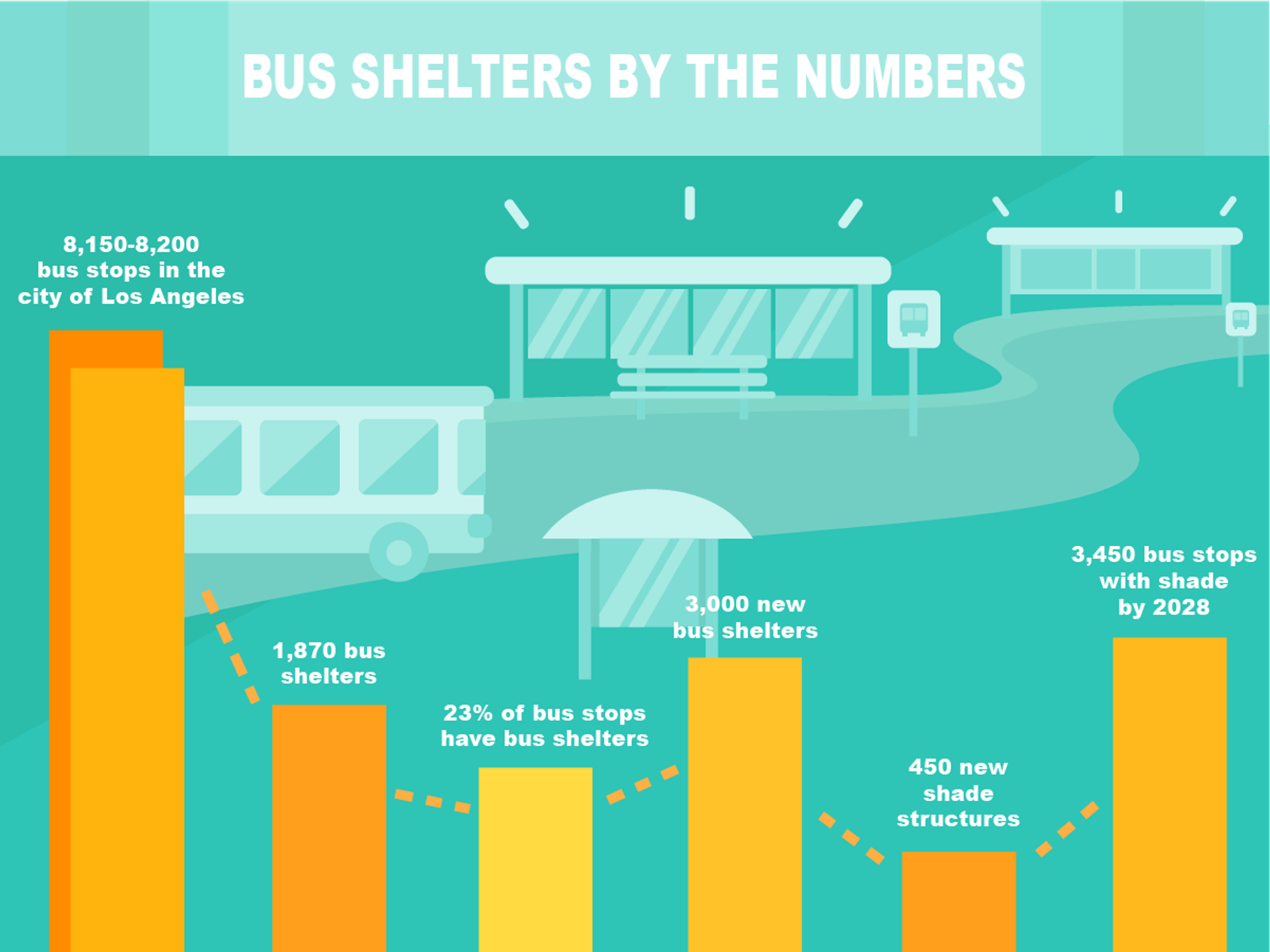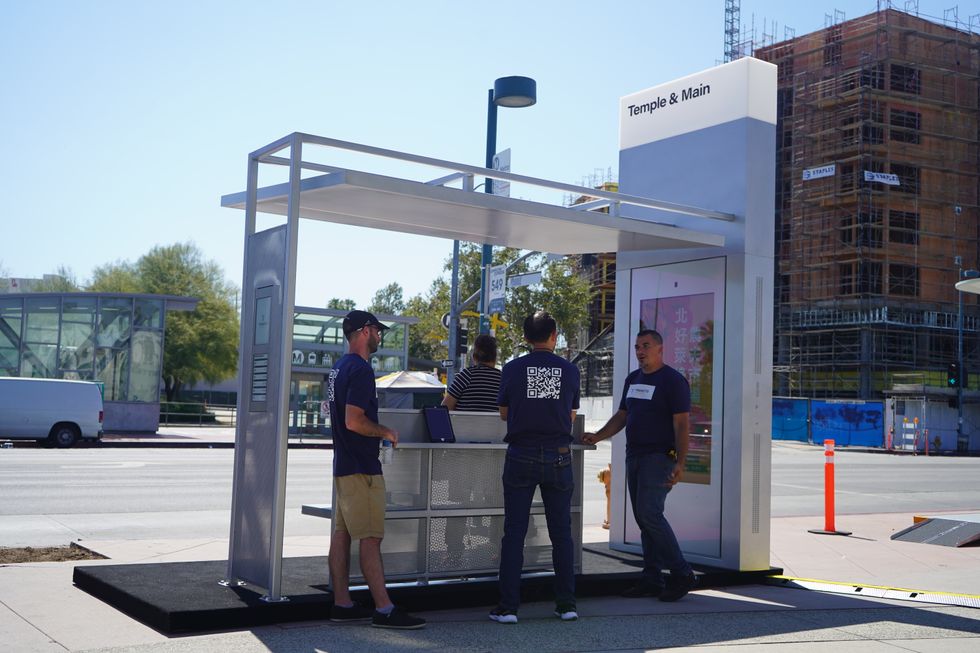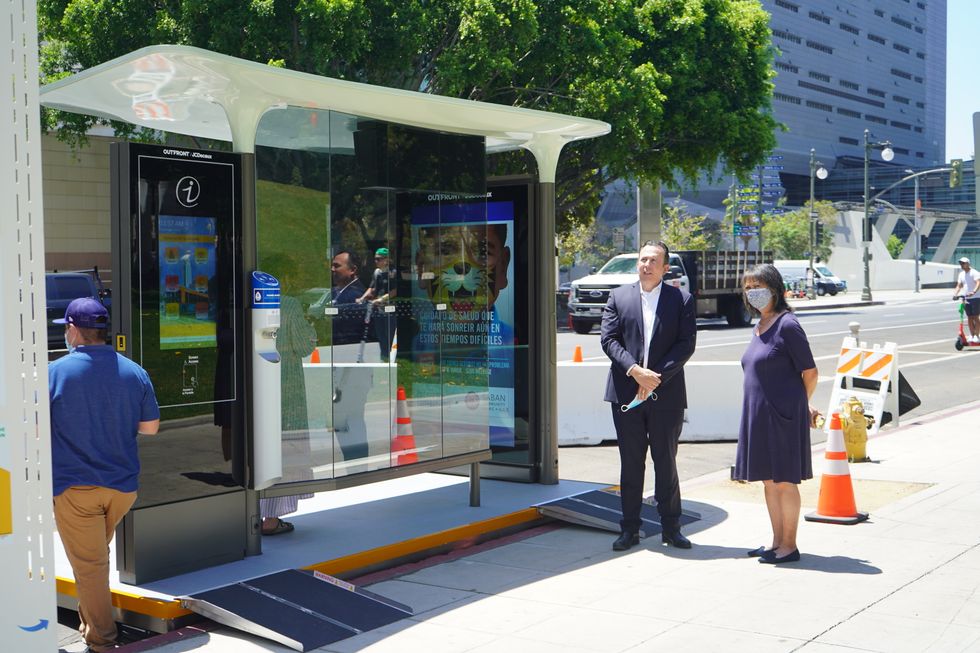Three years ago, Los Angeles went into lockdown due to the COVID-19 pandemic. Now, cities like L.A. are struggling to hold on to pandemic-era transportation and infrastructure changes, like sidewalk dining and slow streets, while managing escalating demand for curb space from rideshare and delivery.
At Curbivore, a conference dedicated to “commerce at the curb” held earlier this month in downtown Los Angeles, the topic was “Grading on a Curb: The State of our Streets & Cities in 2023,” a panel moderated by Drew Grant, editorial director for dot.LA.
“Demand has shifted drastically,” said Jordan Justus, co-founder and CEO of Automotus, a company applying computer vision to curb management. “And we're seeing that a lot of the new normals...of increased e-commerce and on-demand delivery as a result of COVID have stuck around and will likely continue to grow.”
Currently, rideshare drivers, delivery workers, public and private vehicles are all battling it out for limited space, causing double-parking that can block bus or bike lanes. Cities are partnering with companies like Automotus to monitor — and ultimately monetize — the curb.
“The most valuable piece of real estate in the world, right, is downtown on-street parking spaces,” said Gene Oh, CEO of Tranzito, one of the companies awarded L.A.’s new bus shelter contract.
Low-income residents, like bus riders, risk being left behind in the fight for curb supremacy. According to Oh, cities should leverage their role as curb managers.
“We [the city] are going to be a property owner, and we're gonna let you, private companies, use our property. But guess what? If you want to use our property, we want to basically make sure that our public policies can be achieved through your vehicles.”
People are still moving around cities, just differently.
According to Connie Llanos, interim general manager of LADOT, some shared modes of transportation have already rebounded, with dockless micromobility on track to match 2019 numbers this year and DASH at 80% of pre-pandemic ridership.
However, while DASH numbers are up, Commuter Express, LADOT’s bus program aimed at workers with traditional hours, has yet to recover as many office jobs went remote during the pandemic.
“The problem we have in San Francisco and many big cities is that our transit systems are all about getting people into and out of downtown,” said Tom Maguire, streets director at SFMTA.
Transit agencies across the U.S. (including L.A. Metro) are struggling to regain ridership as they face a potential fiscal cliff. Maguire said that the city might change its parking meter rules to recoup some of the parking revenue lost due to the pandemic.
“The parking meters go off at 6 p.m. in San Francisco and San Francisco is a great place at night,” said Maguire. “I don't think you should park for free when you go out to spend $300 on a dinner in San Francisco. I think you should pay the meter.”
Taking away free parking might prove a tough sell to Angelenos. But cars — even electric ones — are not the answer.
“As much as I love electric vehicles — I certainly love mine — the electric vehicle alone is not going to solve our climate challenges,” said Llanos. Instead, the state should invest in incentives for alternative modes of transportation like e-bikes and public transit.
Could more curb data make the city more equitable?
As cities implement new curb management tools like the Curb Data Specification, questions arise about privacy and how data collected by cities will be used.
As part of its dockless micromobility program, LADOT created the Mobility Data Specification (MDS) and required companies to share trip data with the city. In 2020, Uber and the Electronic Frontier Foundation filed a lawsuit against LADOT, challenging MDS on Fourth Amendment grounds, arguing that the city was collecting real-time trip information that could be used to identify individual users. The lawsuit was ultimately dismissed.
By monitoring the curb, cities seek to shift the cost of doing business from workers to companies like Uber, Lyft and Doordash, argues Maguire.
“If you think about the way we interact with a typical Uber driver, we give them a lot of parking tickets, and the driver pays that parking ticket,” he said. “I would much rather move upstream and work with Uber and all the other companies to optimize the use of the space and that can only be done at the network level.”
In 2021, LADOT expanded the MDS requirement to taxis, sparking new scrutiny over privacy.
But as L.A. chases a smart city future, opportunities for new technologies and partnerships will continue to expand.
“Go out there and use your resources, use that VC funding,” said Llanos. “And come back to us with some real ideas about how you solve our problems.”
- Roadr App Takes on the Roadside Assistance Megalith AAA ›
- Metro Is Launching a Universal Pass Experiment in South LA This Summer ›
- Launched During the Pandemic, Metro’s $1 Rideshare Experiment Is Expanding to the Westside ›
- LA‘s Bus Stop Redemption ›
- Here's What LA's Proposed New 'High-Tech' Bus Shelters Will Include ›


 Evan Xie
Evan Xie Christian Gutierrez
Christian Gutierrez Christian Gutierrez
Christian Gutierrez